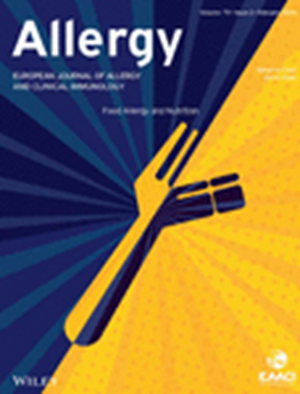Improved quality control of allergen products: Assessing the molecular allergen composition by mass spectrometry
Abstract
Background
Natural allergen sources contain a variety of allergens, against which allergic subjects have developed individual sensitization profiles. Ideal allergen products for skin prick testing (SPT) and allergen immunotherapy (AIT) should contain the complete set of allergens of the respective allergen sources to cover all sensitization profiles. However, commercially available allergen products were shown to vary regarding their allergen composition.
Methods
The qualitative allergen composition of different SPT and AIT products produced from pollen of grasses, birch, mugwort and from house dust mites was assessed by a consistent high-resolution liquid chromatography-coupled tandem mass spectrometry method (LC–MS/MS).
Results
All major, mid-tier and most minor allergens were detected in each of the investigated three batches of SPT and AIT products, demonstrating the completeness of the allergen composition and a high degree of batch-to-batch consistency.
Conclusion
This is the first study using a single consistent high-resolution LC–MS/MS method to provide solid data on the qualitative allergen composition of SPT and AIT products manufactured from various common allergen sources. The applied method showed high reliability in qualitative batch-to-batch consistency testing and can be performed fast and with high throughput. High-resolution LC–MS/MS is applicable for process development and quality control to ensure market availability of allergen products corresponding to the composition of the respective natural allergen sources.


 求助内容:
求助内容: 应助结果提醒方式:
应助结果提醒方式:


